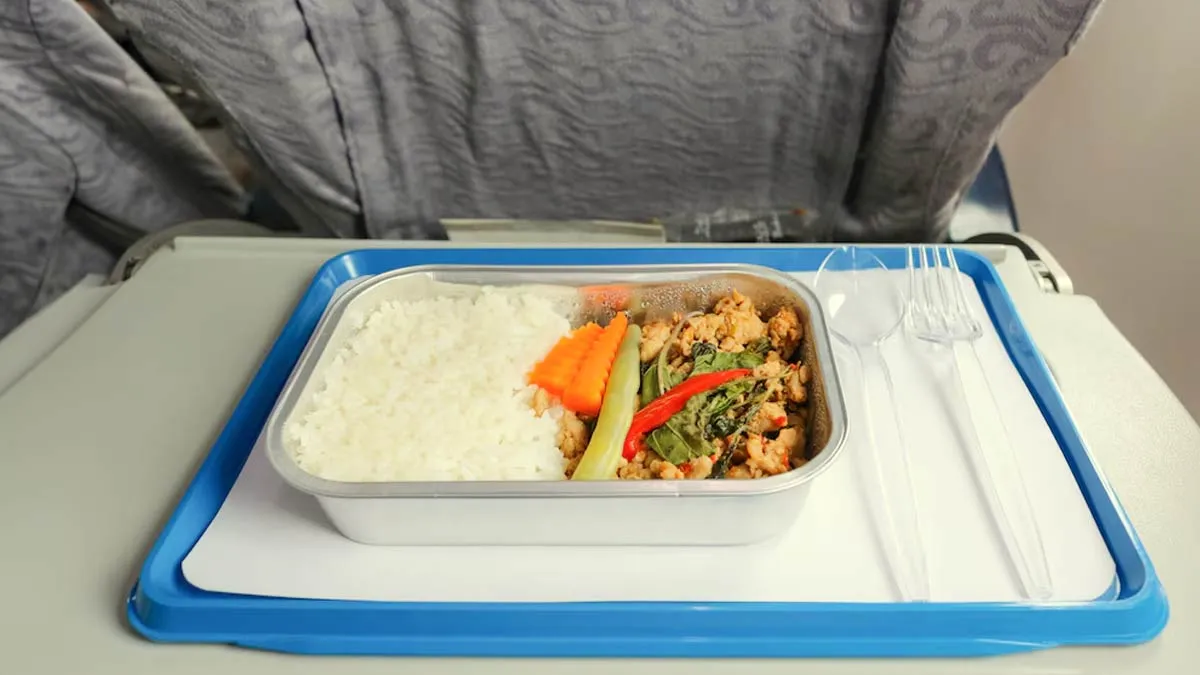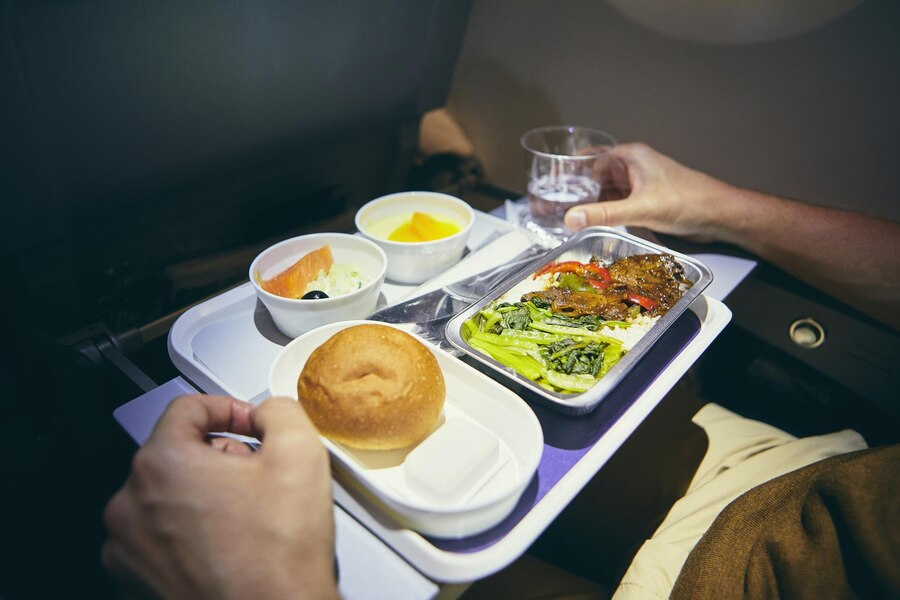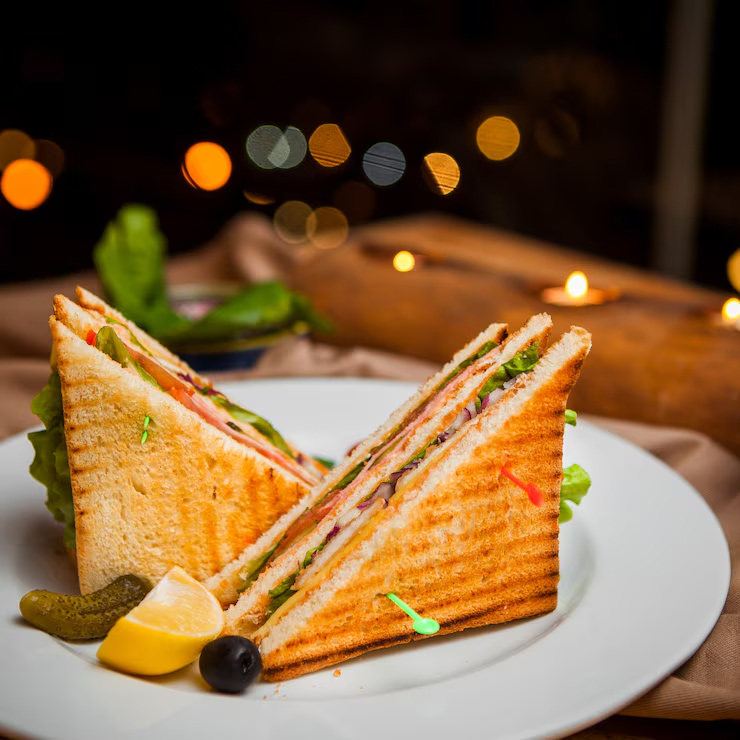
Most of us would agree that our favourite meals aren't typically enjoyed on an aeroplane. Airline food is often pre-packaged, reheated, and served in flimsy paper trays with plastic utensils, making the whole experience feel lacklustre. But if you think airline food is bland or unappetising, it’s not entirely the airline’s fault. To understand more about why these meals fall short, we spoke with Shivani Rathee, Dietician at Sharda Hospital, and Avni Kaul, Nutritionist, Dietician, and Wellness Coach, Specialist of Pregnancy Health and Founder of Nutri Activania, who explained the reasons behind the unappealing nature of in-flight meals and suggested alternatives for a more satisfying experience.
When you board a plane and soar thousands of feet above the ground, your sense of taste goes on a bit of a journey of its own. The flavours of everything, from pasta to a sip of wine, are altered in ways we are still beginning to understand.
Dr Rathee explained, "Aeroplane food often tastes bland or unappealing for several reasons, primarily due to the cabin environment and the way food is prepared and served at high altitudes. The dry, low-humidity conditions in an aeroplane cabin can significantly reduce our ability to taste food." Additionally, the lower pressure inside the plane, compared to sea level, also affects our taste buds and sense of smell.

This combination of reduced air pressure and dryness dampens our sensitivity to certain flavours, especially salty and sweet ones. Consequently, food that might taste delicious on the ground can seem flat or dull when served mid-flight.
Dr Rathee further elaborated, "At higher altitudes, the reduced air pressure affects the sensitivity of our taste receptors, making it harder to detect certain flavours, especially salty and sweet ones. This is because lower pressure changes the way food molecules interact with our olfactory system, which is responsible for our sense of smell."
However Dr Kaul told us an interesting aspect, she said, "One contributing factor to the bland and unappetising nature of airplane food is the background noise. At cruising altitude, passengers are typically exposed to background noise levels of 80-85 dB, depending on their proximity to the engines. This noise diminishes our ability to perceive taste but does not affect all foods equally." Reduced cabin air pressure also hampers taste perception at altitude. Modern aircraft are pressurized to simulate conditions found at altitudes of 6,000-8,000 feet, making it more difficult to detect sweet, sour, salty, and bitter flavors.
Don't Miss: Don't Like Papaya? 9 Ways How Eating One Daily Helps In Weight Loss
Since scent plays a crucial role in how we experience taste, the diminished sense of smell at high altitudes leads to a less pronounced taste sensation. Additionally, the dry air in flight cabins can cause dryness in the mouth and nasal passages, further reducing our ability to fully enjoy the flavours of food.
Aeroplane cuisine is designed to overcome the unique challenges posed by high altitudes, but these necessary adaptations often result in less flavourful meals. Dr Rathee explained that most aeroplane food is pre-cooked and reheated during the flight, which leads to a loss of freshness and taste.
“To prevent spoilage or contamination, meals are often prepared with preservatives or using methods like vacuum-sealing, which can impact the overall flavour,” she said. Additionally, softer ingredients are commonly used, and airlines focus on meals that store well, which can limit the variety of savoury options available. Due to in-flight cooking restrictions, many airlines opt for simpler, less seasoned dishes rather than meals with bold or complex flavours.
Dr Kaul however says, "After cooking, the meals are packed, blast-chilled, and refrigerated before being reheated during the flight. Since microwaves and open flames are prohibited on planes, convection ovens are used to reheat meals by circulating hot, dry air around the food."
Given these multiple preparation steps and the chemical changes the food undergoes at each stage, it’s no surprise that by the time you’re enjoying your lamb and potato mash mid-flight, the flavour has been significantly impacted.
Passengers can improve their aeroplane meal experience by making smart food and beverage choices. Dr Rathee recommends drinking plenty of water throughout the flight to prevent dehydration and ensure your taste receptors function properly. Opting for meals with stronger, savoury flavours rather than overly salty foods is also a good idea, as these flavours tend to hold up better in the dry and low-pressure conditions of an aircraft cabin. Spicy dishes or those containing strong herbs, like garlic or ginger, are often more enjoyable at high altitudes.

Dr Kaul suggests wearing noise-canceling headphones as they can make food and beverages taste better at altitude by reducing the impact of background noise on your sense of taste.
Additionally, bringing your own snacks such as almonds, cheese, or sandwiches can be a great way to enhance your in-flight nutrition, as these options are better suited to the cabin's dry air and low pressure. In terms of beverages, Dr. Rathee suggests choosing tea, juice, or even wine over carbonated drinks, as the bubbles in soda may feel less pleasant due to the cabin pressure.
Don't Miss: Study Reveals Frozen Food Makes You Age Faster: Expert Weighs In
So, next time you're cruising at 30,000 feet, hydrate, skip the soggy snacks, and opt for flavourful foods that will survive the altitude. With a little planning, you might just find that aeroplane meals aren’t as bad as they’re cracked up to be, just don’t expect Michelin-star quality while you're still in the sky.
Keep reading Herzindagi for more such stories.
Credits: Freepik
Also watch this video
Herzindagi video
Our aim is to provide accurate, safe and expert verified information through our articles and social media handles. The remedies, advice and tips mentioned here are for general information only. Please consult your expert before trying any kind of health, beauty, life hacks or astrology related tips. For any feedback or complaint, contact us at compliant_gro@jagrannewmedia.com.